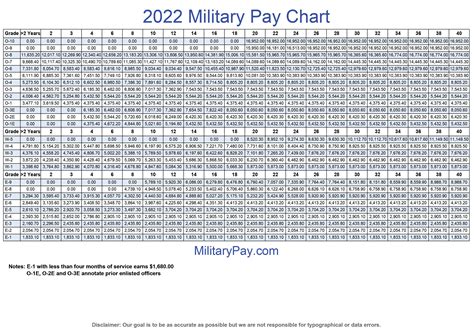Design Ultimate Ww2 Marine Uniforms Now

The World War II era evokes a sense of nostalgia and admiration for the brave men and women who served their countries during this pivotal period in history. Among the various military branches, the Marine Corps stands out for its unique culture, discipline, and unwavering commitment to duty. In this blog post, we will delve into the world of Marine uniforms, exploring their evolution, significance, and the ultimate design considerations for modern-day Marine attire.
The Evolution of Marine Uniforms

Marine uniforms have undergone a remarkable transformation since the early days of the Corps. From the humble beginnings of the Continental Marines during the American Revolution to the global conflicts of World War II, the uniform has evolved to meet the changing needs of warfare and the growing professionalism of the Marine Corps.
During World War II, Marine uniforms were characterized by their practicality and adaptability to various environments. The standard-issue uniform consisted of a woolen jacket, trousers, and a garrison cap, all in a distinctive olive drab shade. This uniform was designed to provide comfort, durability, and camouflage in the diverse theaters of war, from the Pacific islands to the European countryside.
The Significance of Marine Uniforms

Marine uniforms hold immense significance beyond their functional purpose. They serve as a symbol of pride, honor, and camaraderie among Marines. The uniform is a tangible representation of the values and traditions that the Corps holds dear, fostering a sense of unity and esprit de corps.
When a Marine dons their uniform, they embody the spirit of the Corps, instilling a sense of discipline, professionalism, and dedication to duty. The uniform becomes a visual reminder of the sacrifices made by those who came before and a testament to the continued commitment to protecting the nation's freedoms.
Designing the Ultimate Marine Uniform

In today's modern world, where technology and innovation drive progress, it is essential to explore how Marine uniforms can be enhanced to meet the demands of contemporary warfare and the evolving needs of Marines.
1. Functionality and Comfort
The ultimate Marine uniform should prioritize functionality and comfort. Marines often operate in diverse and challenging environments, from extreme heat to freezing cold, and their uniforms must be able to adapt accordingly.
- Incorporating advanced fabric technologies that provide moisture-wicking and temperature-regulating properties can enhance comfort and performance.
- Designing a uniform with a modular approach allows Marines to add or remove layers based on the climate and mission requirements.
- Ergonomic design elements, such as articulated seams and stretch panels, can improve mobility and reduce fatigue during prolonged periods of wear.
2. Enhanced Protection
Protecting Marines from potential threats is a critical aspect of uniform design. The ultimate Marine uniform should incorporate the latest advancements in protective gear.
- Incorporating lightweight and flexible body armor that provides effective protection without compromising mobility.
- Integrating advanced camouflage patterns that offer improved concealment in various terrains and lighting conditions.
- Developing uniforms with built-in ballistic protection, such as bulletproof vests or integrated armor plates, to provide an additional layer of safety.
3. Durability and Longevity
Marine uniforms are subjected to rigorous conditions, including harsh weather, intense physical activity, and exposure to various elements. Durability and longevity are essential considerations.
- Utilizing high-quality, durable materials that can withstand the demands of combat and training.
- Implementing reinforced stitching and construction techniques to prevent wear and tear, ensuring the uniform maintains its integrity over time.
- Incorporating quick-drying fabrics that facilitate faster drying times, reducing the risk of moisture-related issues.
4. Customization and Personalization
Every Marine is unique, and allowing for customization and personalization in their uniforms can foster a sense of individuality and pride.
- Offering a range of uniform styles and colors to cater to different preferences and specializations within the Corps.
- Providing options for embroidery or patches that represent unit affiliation, awards, or individual achievements.
- Introducing removable accessories, such as badges or pins, that can be easily added or removed to reflect a Marine's current assignment or qualifications.
5. Technology Integration
In an era of rapid technological advancement, integrating cutting-edge technology into Marine uniforms can enhance their capabilities and efficiency.
- Incorporating wearable technology, such as fitness trackers or biometric sensors, to monitor a Marine's vital signs and performance during training or combat.
- Developing uniforms with built-in communication systems, allowing for seamless and secure communication between Marines on the battlefield.
- Exploring the use of advanced materials with built-in solar panels or energy-harvesting capabilities to power essential devices and reduce the need for external power sources.
The Importance of Heritage and Tradition

While embracing innovation and modernization, it is crucial to preserve the rich heritage and traditions associated with Marine uniforms. The iconic look and feel of the Corps' uniforms should be carefully considered to maintain the connection to its proud history.
Incorporating subtle design elements that pay homage to the past, such as traditional rank insignia or unit crests, can strike a balance between progress and preserving the Corps' identity. This ensures that the ultimate Marine uniform remains instantly recognizable and instills a sense of pride and continuity.
Conclusion

Designing the ultimate Marine uniform is a complex task that requires a delicate balance between functionality, protection, durability, and the preservation of heritage. By embracing technological advancements and innovative materials while staying true to the Corps' rich traditions, we can create a uniform that embodies the spirit of the Marines and equips them with the tools they need to excel in their missions.
As we continue to explore and refine the design of Marine uniforms, we must never forget the sacrifices made by those who came before us and the unwavering dedication of the men and women who serve today. The ultimate Marine uniform is not just a garment; it is a symbol of honor, courage, and commitment to the values that define the United States Marine Corps.
What are the key considerations when designing Marine uniforms?
+When designing Marine uniforms, it is crucial to prioritize functionality, comfort, protection, durability, and the preservation of heritage. Incorporating advanced fabrics, ergonomic design, protective features, and customizable elements can enhance the overall performance and satisfaction of Marines.
How can technology improve Marine uniforms?
+Technology integration can revolutionize Marine uniforms by enhancing communication, monitoring vital signs, and providing energy-efficient solutions. Wearable technology, built-in communication systems, and energy-harvesting capabilities can improve efficiency, safety, and overall operational effectiveness.
Why is preserving the heritage of Marine uniforms important?
+Preserving the heritage of Marine uniforms is vital as it maintains the connection to the Corps’ proud history and traditions. By incorporating subtle design elements that pay homage to the past, we ensure that the modern Marine uniform retains its iconic status and instills a sense of pride and continuity among Marines.


